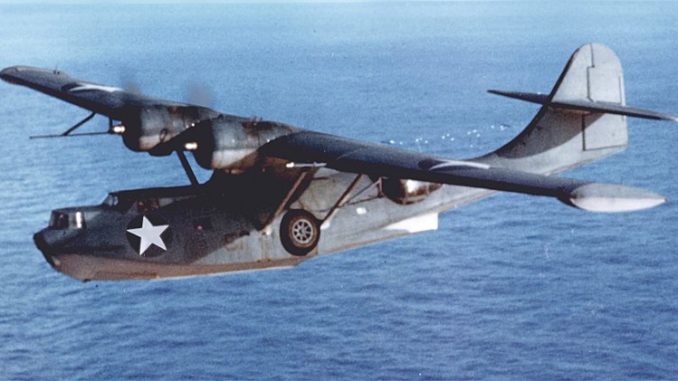
In late May, 1941, the German battleship Bismarck and heavy cruiser Prinz Eugen left the relative safety of the Baltic Sea, headed for the North Atlantic. Their mission was to intercept and capture or destroy merchant marine convoys supplying Great Britian with everything needed to continue the war against Germany.
Early on the morning of 24 May, the pair were met by the British battlecruiser HMS Hood and battleship HMS Prince of Wales. Heavy gunfire from the two German ships sent Hood to the bottom of the sea in less than ten minutes. A magazine [the place where munitions for big naval guns were stored] had been hit, causing massive explosions. Only three men survived. The loss was a devastating blow to British morale. Prince of Wales sustained battle damage sufficient to force a withdrawal. The Bismarck and Prinz Eugen continued on toward the North Atlantic convoys.
British forces were resolved to stop the pair, and an all-out search was launched to locate them again. If the Bismarck and Prinz Eugen were to plunder the transatlantic shipping lanes, they would wreak havoc on the convoys, denying the British supplies vital to the war effort. Unbeknownst to the Royal Navy, the Bismarck had sustained critical damage by gunfire from the Prince of Wales and was enroute to Brest, a safe harbor on the west coast of France, for necessary repairs. Meanwhile the British assigned every available aircraft and ship to a search area and sent them hunting.
RAF Castle Archdale was a British seaplane base in Northern Ireland situated close to both the North Atlantic and the Republic of Ireland, which was officially neutral for the duration. Unofficially, Ireland allowed British aircraft from RAF Castle Archdale to fly over a narrow neck of their country to get to the North Atlantic, saving aircrews much time and fuel while allowing them more patrol time, distance, and coverage. The base was named after an actual castle which sat at the edge of a lake by the name of Lough Erne. It made for a splendid seaplane base.
In 1940, Britian purchased 200 Consolidated PBY Catalina seaplanes – flying boats – from the United States. The US Navy had been flying PBYs for several years and had many pilots experienced in the type. While the sale of the aircraft was public knowledge, the fact that President Roosevelt had authorized American pilots to go with the aircraft as instructors was a secret. The United States was still a neutral country and much of the public was isolationist, adamantly opposed to involvement in another European war.
One of those instructor pilots was Ensign Leonard B. “Tuck” Smith, USN. Whether they were supposed to or not, the American instructors went on actual missions, sitting in the co-pilot seat while an RAF officer sat in the pilot position.
On 26 May, RAF Coastal Command No. 209 Squadron was called on to search for the Bismarck. As usual, “Tuck” went on the mission. According to his official written report, after six hours of flying, at 1010 hours [10:10 AM] he spotted the Bismarck. Smith took contol of the plane while the British pilot went aft to send a contact report. Smith climbed to take advantage of cloud cover, hoping the Germans would not spot them. The intention was to follow the ship until friendly forces could arrive.
Smith’s report continued, “Upon reaching 2,000 feet we broke out of a cloud formation and were met by a terrific anti-aircraft barrage from our starboard quarter”. The Catalina was armed with depth charges, which Smith immediately jettisoned right before making evasive maneuvers to avoid the flak. (In most cases, you don’t want flak to set off the bombs you’re carrying).
Smith is recognized as the first American serviceman to participate in armed combat during World War II, even though at the time of the action, the United States was officially neutral. For his actions the US Navy awarded Smith the Distinguished Flying Cross, although for several years he was not allowed to tell anyone how he earned the medal.
Later in 1941, Smith was reassigned to the Pacific where he served for the remainder of the war. He retired from the service in 1962, with the rank of Captain. He passed away in 2006. He was 90 years old.
Question of the night: Liver and onions, or cow’s tongue? (Coming up with a new QotN is harder than it looks).
